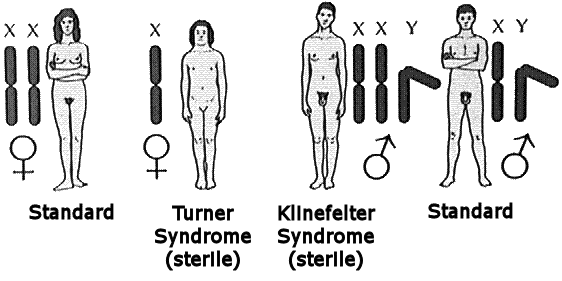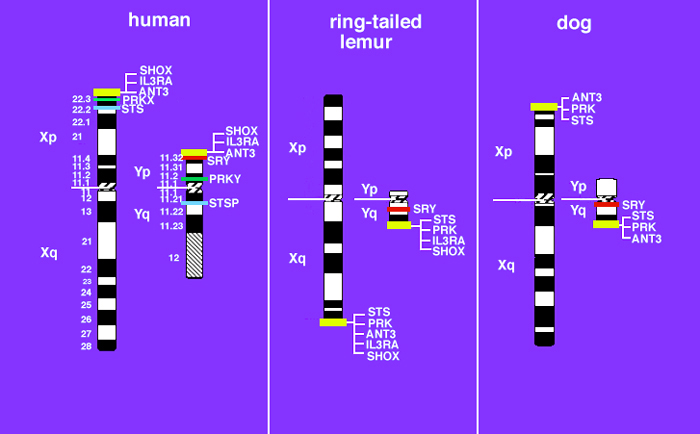Sex Determination in Mammals: Coordination by the Endocrine System

Endocrine Organ
Control
Sex specific phenotypes are driven by the presence or absence of the gonads, rather than cell specific determination.
The gonads form within 2 months of the start of
human
gestation. Primordial germ cells migrate into the genital ridges, which
is
located about a rudimentary kidney. The chromosomal sex of germ cells
determines whether they migrate superficially or deep into the genital
ridge.
This positioning determines the development of testes or ovaries.

Male: Leydig cells within the testes secrete testosterone, which is a male determining steroid hormone (androgen). The hormone binds androgen receptors which function as transcription factors. The androgen receptor complex:androgen responsive enhancer element complex activates male specific expression.
Female: Leydig cells do not form, resulting in no androgens and therefore no male specific expression. The female phenotype is the default. In XY embryos lacking the androgen receptor, development will proceed along the female pathway even with the presence of testes.
Setting the switch

TDF gene, or the testes determination factor was hypothesiezed to exist on the Y chromosome. We now know that this gene is the same gene as the SRY gene on the Y chromosome.
This was determined through gain-of-funtion dominant sex reversal effects, where heterozygous XX mutants were phenotypically male.
The off switch is simly the lack of a Y chromosome, therefore no SRY gene is present.